
The "Southern Great Wilderness" back then is now the "South Dakang"; the former saline-alkali land is now the "Rice Crab Township". The resource-exhausted city of Panjin, Liaoning Province, is making every effort to promote the transformation of the city, and the road to rural revitalization is going steadily.
In the midsummer Panjin, the countryside is like a colorful palette: more than 1.6 million mu of paddy fields are spread out like a green carpet, red Suaeda salsa smears "blush" on the stretches of coastline, and the white wall of black tiles Residential houses, the vast Liaohe River, the endless reeds... This beautiful picture that comes into view reflects the well-off story in "South Dakang".
"Rice Crab Township" Says Good Years
The scorching sun is like fire, the light and water in the rice fields make everything shine.
On the edge of the field, crabs the size of buttons spit bubbles. Zhang Haitao, a farmer in Hujia Town, Panshan County, wears rain boots and checks the growth of rice and river crabs in the rice field. Hearing the sound of footsteps, the little crabs "slipped" and hid in the depths of the rice field.

Zhang Haitao, a farmer in Hujia Town, Panshan County, Panjin City, walks in his rice and crab paddy field to check the growth of rice and river crabs (taken on July 21, drone photo). Photo by Xinhua News Agency reporter Yao Jianfeng
"The rice is growing well this year, and the crabs are fine, just waiting for the autumn harvest!" Zhang Haitao's eyes were full of confidence and expectation.
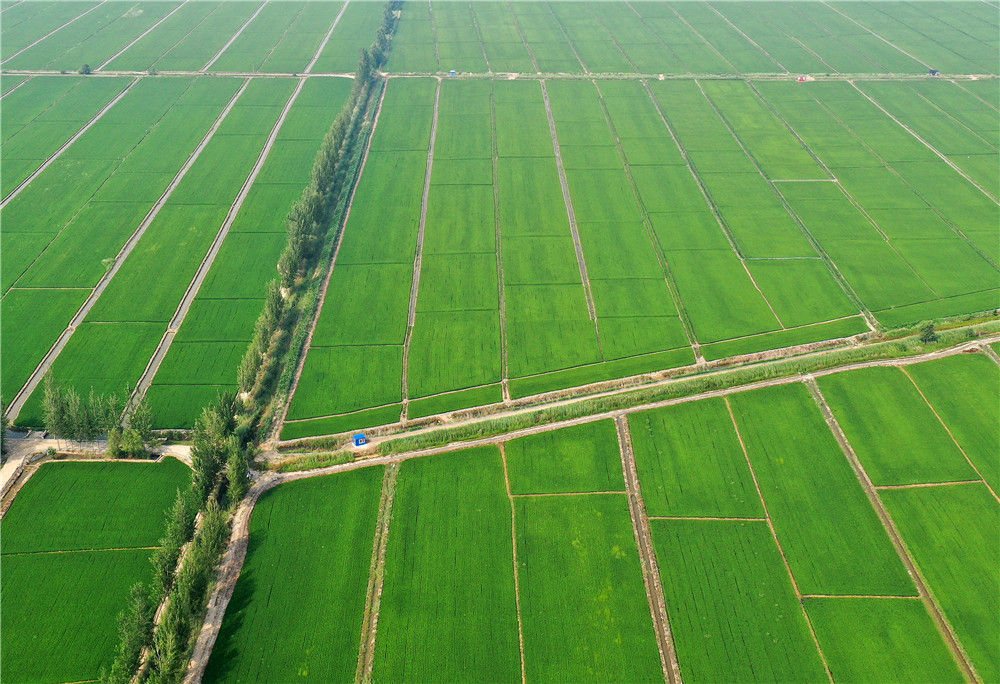
This is the rice and crab paddy field of Zhang Haitao, a farmer in Hujia Town, Panshan County, Panjin City (taken on July 21, drone photo). Photo by Xinhua News Agency reporter Yao Jianfeng
49-year-old Zhang Haitao has planted 300 acres of rice and crab fields, where crabs are cultivated, and both rice and crab cultivation are correct. "The yield of rice per mu is about 1,300 catties, and the yield of crabs per mu is 30 to 50 catties, and the income per mu of land is about 3,000 yuan." Zhang Haitao said. This farmer, who has been planting rice and crab fields for nearly 30 years, has now registered his own company. In addition to selling the rice and crabs produced in his own fields, he also purchases a large number of products from the villagers of Shiliba Village, and sells them all over the country after unified processing and packaging. .
Recalling the scenes of life when he was young, Zhang Haitao sighed with emotion: "Life was too difficult at that time. My wife and I started from selling dried fish in the market with only 150 yuan. Compared with now, one is in the mud and the other is in the mud. in the sky!"
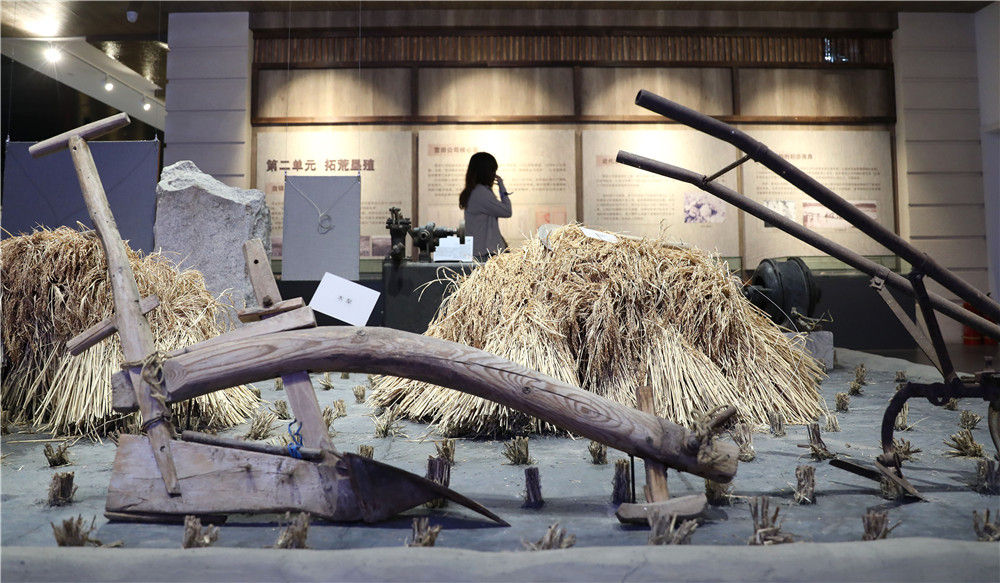
This is the early years of rice farming tools on display in the Rongxing Museum of Rice Farming Folk Village, Rongxing Village, Dawa District, Panjin City (photographed on July 16). Photo by Xinhua News Agency reporter Yao Jianfeng
Since its establishment in 1984, 36 years have witnessed the rise and great changes of the city of Panjin. Panjin was built and prospered because of oil, so it has become a resource-exhausted city. Due to the high salinity content of the land, it was once known as the "Great Southern Wilderness" in the country. Over the years, the local area has gradually transformed the saline-alkali land into a high-yield fertile field through restoration measures such as expelling salt and reducing alkali, improving soil and cultivating fertilizer.
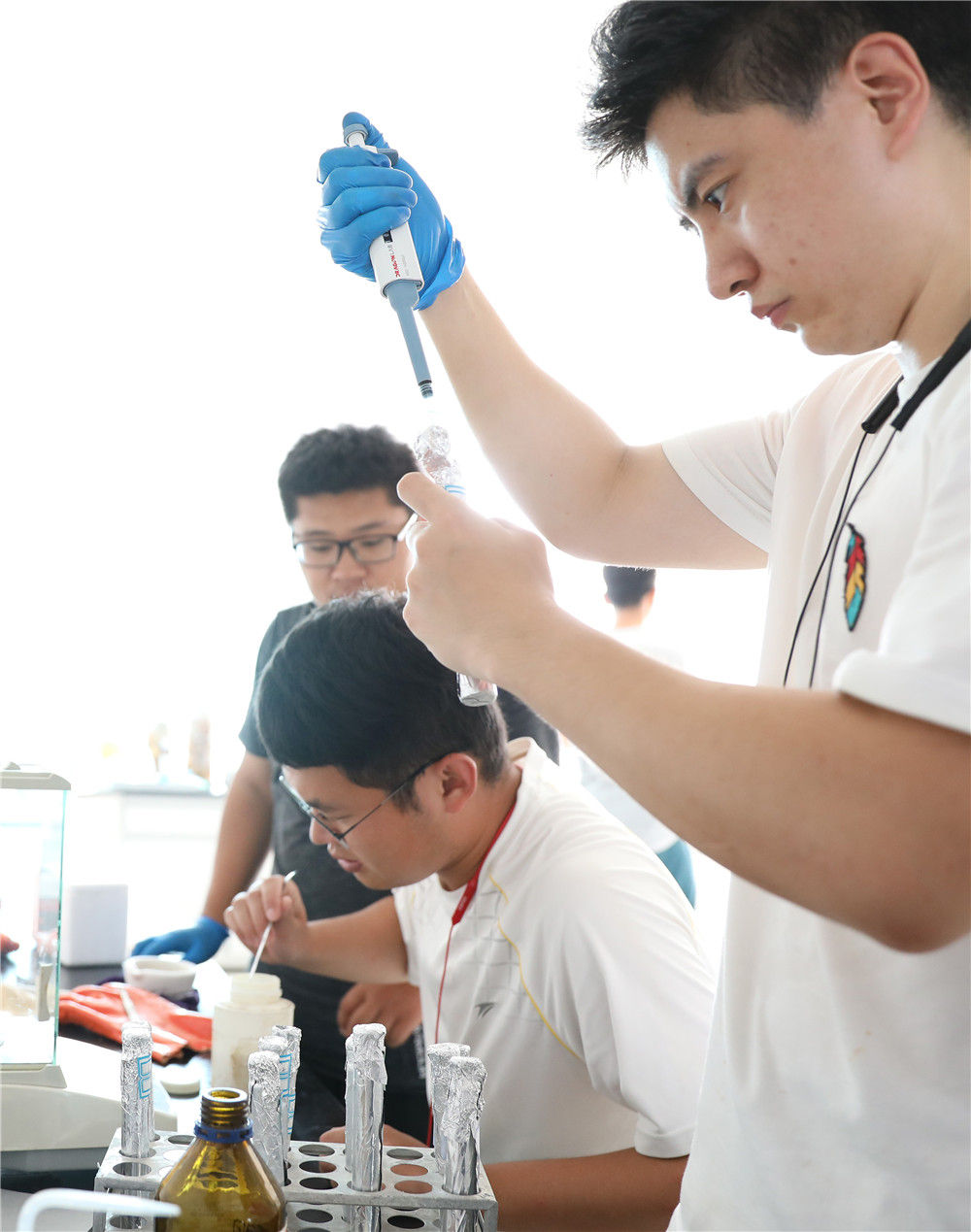
This is a staff member of the laboratory of Panjin Photosynthetic Crab Industry Co., Ltd. conducting specimen analysis (photographed on July 16). Photo by Xinhua News Agency reporter Yao Jianfeng
In the laboratory of Panjin Guanghe Crab Industry Co., Ltd., Li Xiaodong, the head of the enterprise, is leading his scientific research team to carry out scientific and technological research. 55-year-old Li Xiaodong is an important participant and promoter of the crab breeding model in Panjin rice fields. For more than 30 years, his scientific research team has broken through the technical difficulties of industrial artificial seedlings of river crabs and ecological seedlings of river crab soil ponds, and created a business model of "company + farmers + bases + service stations", which has driven tens of thousands of local farmers to become rich and increase their income.
In the company's exhibition hall, Li Xiaodong explained to reporters the benefits of raising crabs in rice fields: river crabs weeds, loosens soil, and catches insects in rice fields, and their excrement becomes fertilizer for rice, reducing the use of pesticides and fertilizers; Habitat conditions, and save aquaculture water.

This is a button-sized crab in the rice-crab symbiosis experimental field of Panjin Guanghe Crab Industry Co., Ltd. This batch of river crabs will be harvested in the autumn of that year and the next autumn (photographed on July 16). Photo by Xinhua News Agency reporter Yao Jianfeng
Today, this technology has been popularized across the country, with an area of more than 10 million mu of planting and breeding, and a cumulative increase of more than 50 billion yuan in farmers' income.
"Our Panjin used to be called the 'Southern Great Wilderness'. Times have changed, and technological innovation has added hard work. The Southern Great Wilderness can also become a 'Southern Great Cang'!" Li Xiaodong said with emotion.
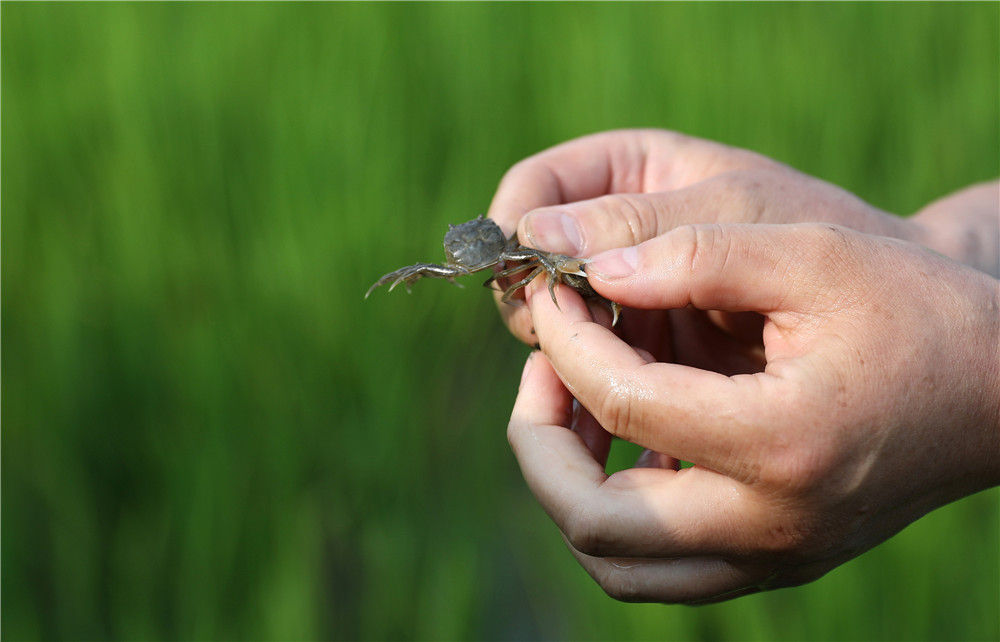
A staff member of Panjin Guanghe Crab Industry Co., Ltd. displays button-sized river crabs in the rice-crab symbiosis experimental field. This batch of river crabs will be harvested in the autumn of that year and the next autumn (photographed on July 16). Photo by Xinhua News Agency reporter Yao Jianfeng
At present, the rice planting area in Panjin is more than 1.6 million mu, all of which are improved from saline-alkali land. The breeding area of river crabs is 1.705 million mu, and the annual output of river crabs is 75,000 tons.
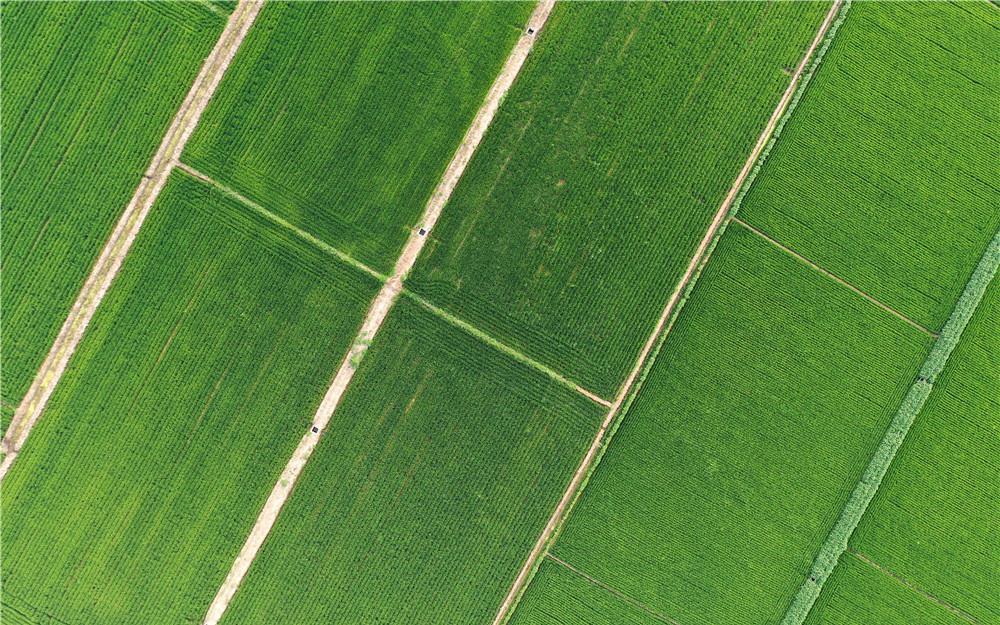
This is the rice crab paddy field in Dabazi Village, Dawa District, Panjin City (taken on July 21, drone photo). Photo by Xinhua News Agency reporter Yao Jianfeng
"Panjin rice and Panjin river crab are well-known all over the country as 'national geographical indication products', and Panjin is also the 'hometown of ecological rice in China', 'the grain city in northern China', 'the first city of river crabs in China'..." Speaking of Panjin's agriculture, rural areas and farmers , Yang Xin, director of Panjin Agriculture and Rural Affairs Bureau, is extremely proud.
A good landscape retains a beautiful nostalgia
"Yu·Dao" cafe, with soothing music and soft lighting, waiter Li Xiaoshu is making coffee for the guests. The fragrant melons and fruits outside the window, and the cicadas chirping, make this cafe in the Daozuo Renjia Folk Village in Rongxing Village, Dawa District, Panjin City, a little more peaceful.
"I used to work in a cafe in the city." Li Xiaoshu told reporters his story, "However, I prefer the quietness of the countryside, which is not far from the city, and the income is good. Two years ago, I discussed with my wife. Okay, let's work in the village together."

This is the B&B restaurant in the Daozuo Renjia Folk Village, Rongxing Village, Dawa District, Panjin City (photographed on July 16). Photo by Xinhua News Agency reporter Yao Jianfeng
Daozuorenjia Folk Village receives more than 100,000 tourists annually, and places hundreds of local villagers to work.In 2018, it was approved as a 3A-level national tourist attraction; in July this year, Rongxing Village was listed in the second batch of national key rural tourism villages announced by the Ministry of Culture and Tourism.
There are many beautiful villages like Rongxing Village in Panjin. With the advent of summer vacation, Yangjia Village, Xinli Town, Dawa District, Panjin City has become more and more lively. Some tourists from the city pick fresh vegetables in the vegetable garden, and some take out their mobile phones and take pictures of the villagers' houses and fields. After seeing off a group of guests, villager Zhang Guiwen told reporters: "In the past, the village was dirty and messy, and people in the village tried to move out. The environment in the village has improved in recent years, and tourists from all over the world regard us as a tourist attraction."
In recent years, Panjin City, with the core of “improving the rural environment and building livable villages”, has simultaneously promoted greening, smooth flow, clear water and other projects in all administrative villages in the city. .
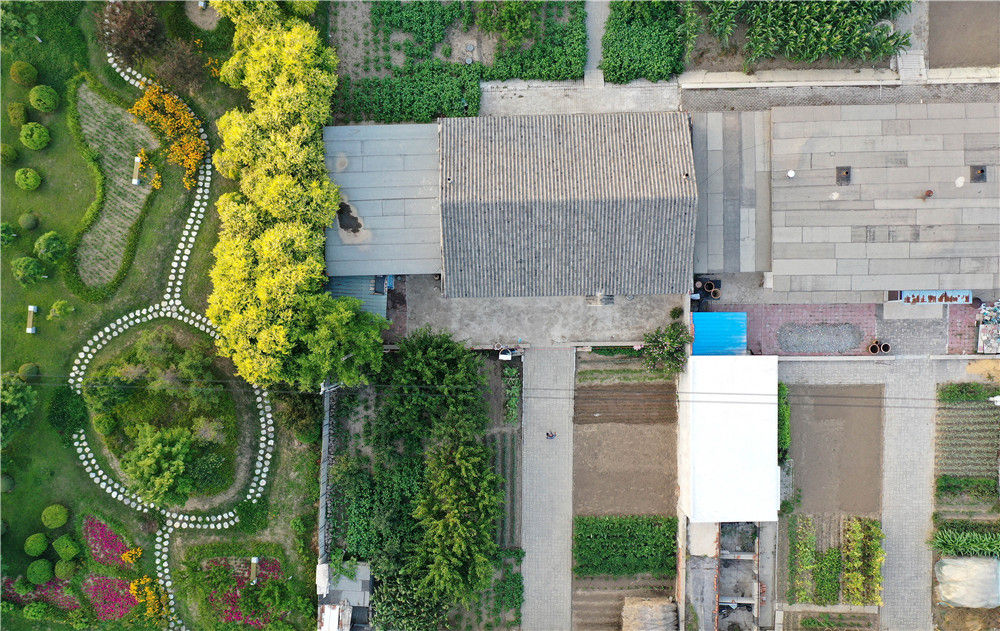
This is part of Dabazi Village, Dawa District, Panjin City (taken on July 21, drone photo). Photo by Xinhua News Agency reporter Yao Jianfeng
The construction of beautiful villages has enabled Panjin to become rich and beautiful, and it has also broadened the development space for local tourism. In 2019, there were more than 2,000 rural homestays and more than 8,000 beds in the city, and the "Homestay + N" industrial model has gradually grown. Rated as a beautiful leisure village in China, 10 villages including Nanguo Village, Desheng Village, and Shimiaozi Village were rated as 3A-level tourist attractions, Zhaoquanhe Town and Hujia Town were rated as national characteristic towns, and provincial beauty demonstrations The number of villages reached 41.
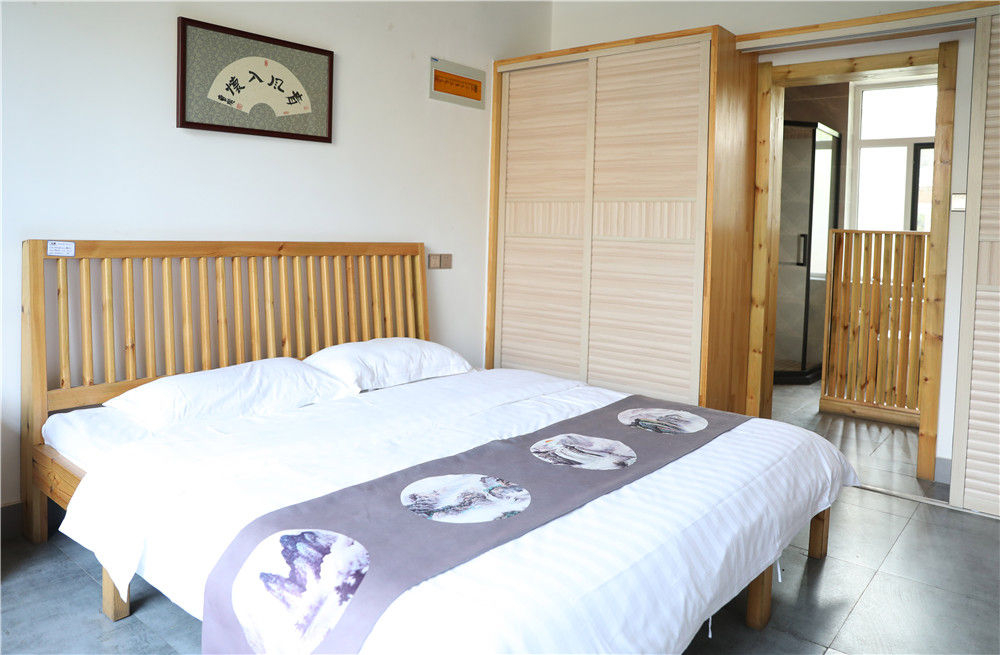
This is the interior of the B&B in the Daozuo Renjia Folk Village, Rongxing Village, Dawa District, Panjin City (photographed on July 16). Photo by Xinhua News Agency reporter Yao Jianfeng
The energy and energy to work hard
At 6:20 p.m., 57-year-old villager Liu Yuanling came to the square in front of the village committee with a dance suit. The music sounded on time, and Liu Yuanling and other villagers changed into costumes and danced to the rhythm.
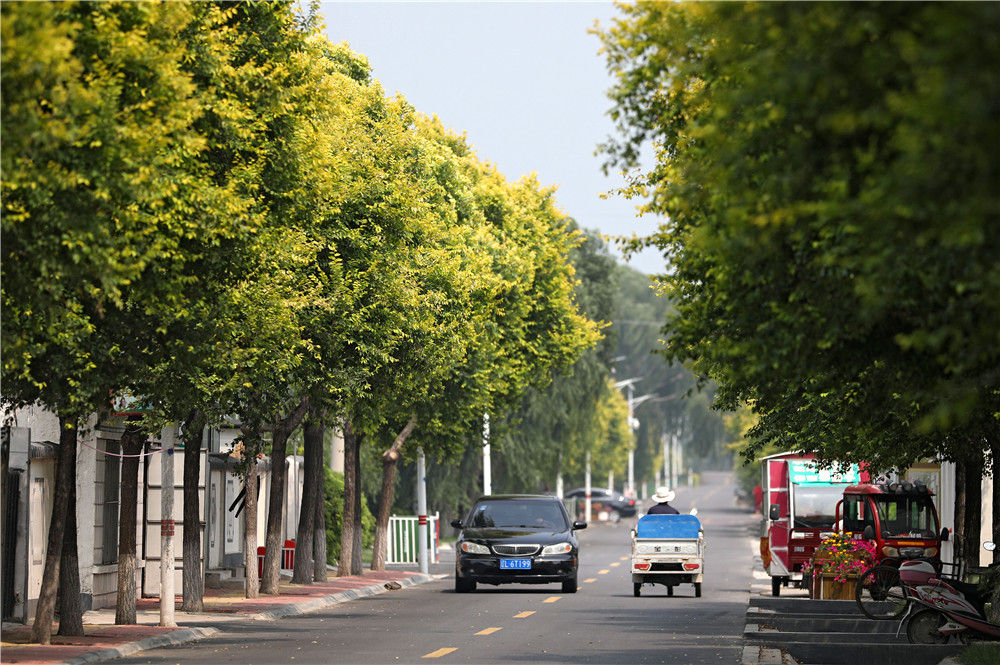
This is the village road in Dabazi Village, Dawa District, Panjin City (photographed on July 16). Photo by Xinhua News Agency reporter Yao Jianfeng
The square of more than 400 square meters is very lively. The square dance team of more than 30 people danced gracefully. Under the two basketball hoops next to them, the teenagers were sweating and dribbling the ball like flying. The villagers were in twos and threes under the big tree, and the vendors pushing snacks and drinks also came to join in the fun... Dawa, Panjin City This is how the summer night in Dabaozi Village began.

This is the 5G base station in Dabazi Village, Dawa District, Panjin City (taken on July 21, drone photo). Photo by Xinhua News Agency reporter Yao Jianfeng
Dabaozi Village not only has the common square dances, supermarkets, and baths in the city, but also 5G networks, new energy vehicle charging piles, and village banks... The convenience and fashion of urban residents are almost all in Dabaozi Village.
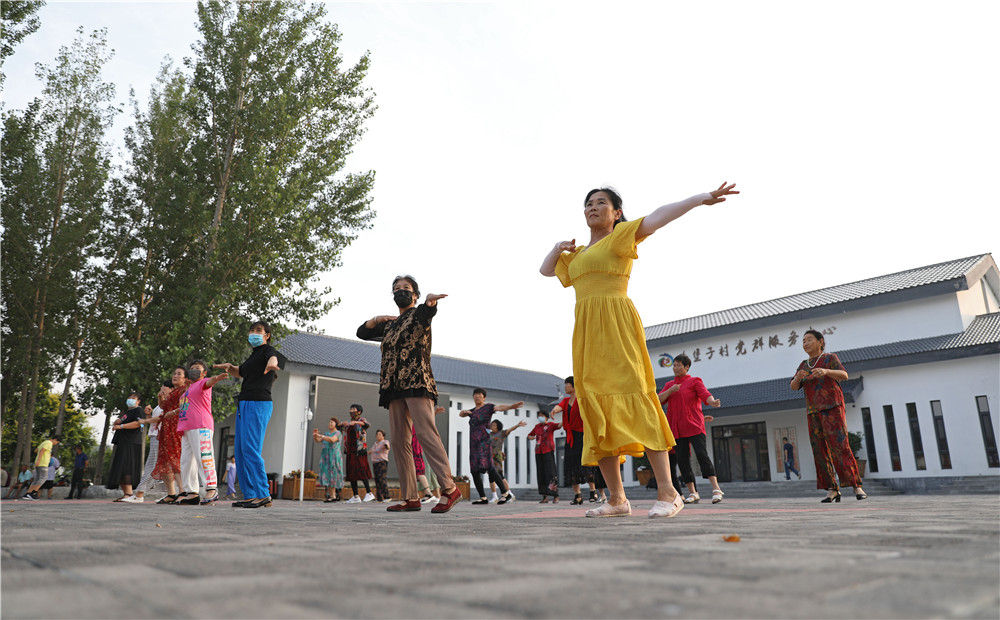
This is the villagers of Dabazi Village, Dawa District, Panjin City dancing on the square in front of the village committee (photo taken on July 21). Photo by Xinhua News Agency reporter Yao Jianfeng
There are row upon row of houses, and the village road leads to seclusion. Passing through a paddy field, I saw Guo Jiaming, 25, debugging 5G equipment in his vegetable greenhouse. This kind of equipment for remote monitoring of pests and soil temperature and humidity has become an indispensable helper for him. Since the beginning of this year, he has also tested the water "live streaming" and successfully sold tens of thousands of catties of persimmons.
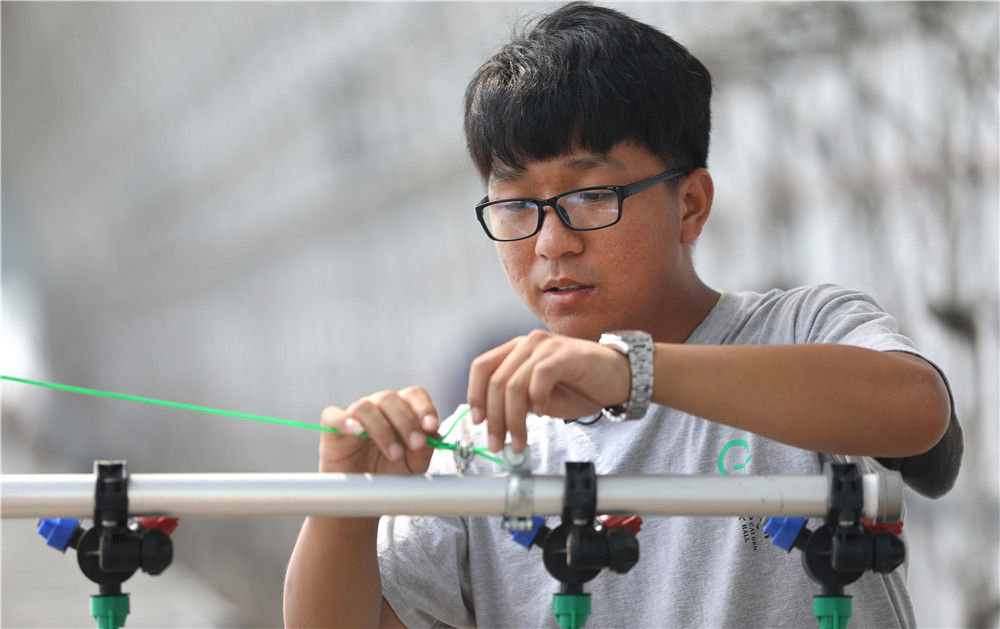
Guo Jiaming of Dawa District, Panjin City is debugging equipment in his vegetable growing greenhouse (photo taken on July 16). Photo by Xinhua News Agency reporter Yao Jianfeng
This young man, who graduated from Shenyang Agricultural University in 2015, chose to go back to the village to start a business after working abroad for a period of time. He not only studied and improved the planting technology of alkaline soil tomatoes, but also led more than 100 vegetable farmers to set up cooperatives and built 150 greenhouses. , providing free technical training. The annual income of cooperative members increased by more than 5 million yuan. "I think my career should be in the countryside. Now the infrastructure in the countryside is very complete, and new technologies are also useful. Farming with technology can drive the villagers to get rich, so that the countryside will have more hope." Guo Jiaming said.
As a pilot city for comprehensive reform of urban-rural integration in Liaoning Province and a pilot city for livable rural construction, Panjin City has been strengthening rural infrastructure construction since 2014 and improving the level of public services. The city has built 4,300 kilometers of black roads in rural areas. The penetration rate of sanitary toilets has reached more than 90%; the coverage rate of 24-hour water supply in rural areas has reached 100%; the competent gas companies are guided to promote gas projects in rural areas to ensure that the coverage rate of the gas pipeline network reaches 100%.

This is the full picture of Dabazi Village, Dawa District, Panjin City (taken on July 21, drone photo). Photo by Xinhua News Agency reporter Yao Jianfeng
"Nowadays, many urbanites want to come to live in our village, but I never thought that our peasants would also live a life that the urbanites would envy!" Luo Di, the Party Secretary of Dabaozi Village, said proudly that in the future, the village will also build a modern rural shooting base and net red cultivation base.
"To make the countryside beautiful and the villagers rich is the proper meaning of Panjin's urban transformation and building a moderately prosperous society in an all-round way. In the future, the villagers' lives will get better and better!" said Fu Zhongwei, secretary of the Panjin Municipal Party Committee.
Text reporters: Cao Zhi, Chen Mengyang, Sun Renbin, Bai Yongquan
Video reporters: Gao Ming, Yao Jianfeng, Zhou Xiaoli
New media editors: Wang Dan, Wu Jinfu